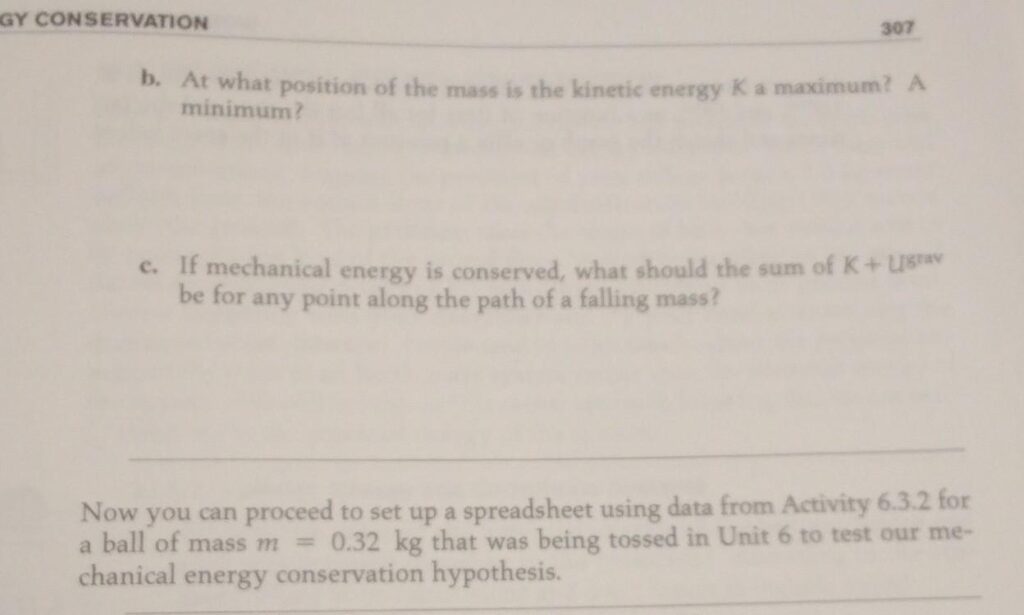Mechanical energy, an essential concept in physics, embodies the sum of potential and kinetic energy within a system. This intricate balance elucidates why and how mechanical energy remains conserved in an isolated environment, making it a cornerstone of classical mechanics. Conservation of mechanical energy plays a pivotal role in understanding the movements and interactions in our natural world, highlighting the elegance of physical laws.
At its core, the principle of conservation of mechanical energy posits that in the absence of non-conservative forces—particularly friction and air resistance—the total mechanical energy of an object or system remains constant throughout its motion. This principle not only forms the bedrock of Newtonian physics but also has profound implications in real-world scenarios, from simple machines to complex ecological systems.
Understanding Mechanical Energy Dynamics
The duality of mechanical energy consists of kinetic energy (the energy of motion) and potential energy (the stored energy of position). Kinetic energy, outlined mathematically by the formula KE = ½ mv², describes how an object’s speed and mass contribute to its overall energy. Conversely, potential energy, particularly gravitational potential energy, is determined by the height of an object above a gravitational field, exemplified by PE = mgh, where ‘m’ signifies mass, ‘g’ represents the acceleration due to gravity, and ‘h’ stands for height.
The transition from potential to kinetic energy is often observed in pendulums, roller coasters, and various other physical systems. As these systems oscillate or traverse heights, energy repeatedly converts from one form to another while maintaining the overall mechanical energy constant. During the ascent of a roller coaster, for instance, kinetic energy diminishes while potential energy burgeons until the peak is reached, whereupon kinetic energy surges as it plummets downwards. This cyclical transformation delineates the core of mechanical energy conservation—emphasizing that the total energy exists in various forms, yet its aggregate remains unchanged, pending no extrinsic energy losses.
The Role of Non-Conservative Forces
While the conservation of mechanical energy holds true in an idealized, frictionless environment, reality presents an array of non-conservative forces frequently impeding this equilibrium. Friction and air resistance, two ubiquitous forces, sap energy from mechanical systems through dissipative processes, often transforming usable energy into thermal energy, which dissipates into the environment. Consequently, the introduction of these forces results in a decrease in total mechanical energy, deviating from conservation principles.
Consider the motion of a car on a road; the energy expended in overcoming frictional forces leads to a discernible loss of mechanical energy as heat. Additionally, in biological systems, mechanical energy loss translates into metabolic heat, reflecting the inefficiencies in energy transfers across various ecological interactions. Thus, the conservation of mechanical energy remains a conditional principle, applicable solely when non-conservative forces are negligible or can be accounted for accurately.
Practical Implications of Mechanical Energy Conservation
The implications of the conservation of mechanical energy extend beyond theoretical concerns; they manifest in a plethora of practical applications, notably in engineering and environmental sciences. Ingenious applications of this principle pave the way for energy-efficient designs, sustainable technologies, and a deeper comprehension of ecological dynamics.
In the realm of engineering, understanding how mechanical energy is conserved leads to innovative solutions in machinery and transportation. Flywheels, for instance, are designed to store rotational energy and utilize it when needed, maximizing energy efficiency. Similarly, the principles of mechanical energy conservation inform the development of roller coasters and amusement park attractions, optimizing thrills while ensuring safety through calculated energy transfers.
Moreover, in an era profoundly impacted by climate change, the conservation of mechanical energy has significant relevance in promoting sustainability. Technologies leveraging gravitational potential energy—like hydroelectric power stations—harness the natural flow of water, converting potential energy into kinetic energy to generate electricity with minimal environmental disruption. This dual commitment to energy conservation and ecological stewardship underscores the capacity to innovate responsibly in a resource-strained world.
In Conclusion
Grasping how mechanical energy is conserved unveils a deeper understanding of daily phenomena and complex systems alike. By emphasizing the transition between kinetic and potential energy, the significance of non-conservative forces, and the practical applications of energy conservation, one can appreciate the sublime simplicity and complexity that govern our physical reality.
The knowledge of mechanical energy conservation not only enriches our comprehension of physics but also inspires meaningful action toward sustainability. By leveraging these principles, individuals and industries alike can cultivate a future that harmonizes technological advancement with environmental consciousness. As we continue to explore the realms of mechanics, let us remain vigilant of the intricate relationships between energy forms, behavioral dynamics, and the overarching imperative of conservation—both in theory and in practice.

